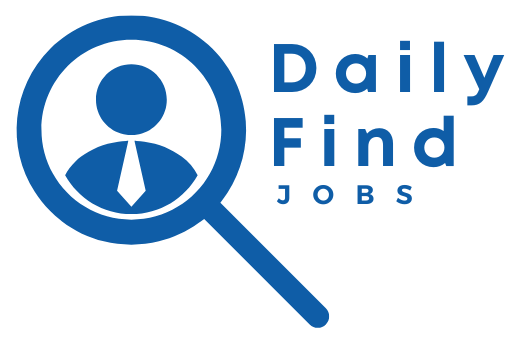Returning to work after a long gap can be a daunting challenge, but with the right approach, you can successfully reintegrate into the workforce. Many people face this situation, whether due to personal reasons, care responsibilities, or other life events. In this article, we will explore effective strategies to update your skills, rebuild your professional network, and approach job applications with confidence. Read on to discover how to turn your career gap into an opportunity for growth and development.
Understanding the Challenges of a Career Gap
A career gap can present several obstacles when returning to the workforce, each demanding unique strategies to overcome. One major challenge is anxiety about outdated skills. Industries evolve quickly, introducing new technologies and methodologies, which can make returning professionals feel inadequate or out of touch. It’s important to recognize areas where skills need improvement and seek out relevant training opportunities.
Another hurdle is explaining the gap to potential employers. During interviews, candidates need to address the gap with honesty and a positive attitude. Employers are often understanding, especially if the gap was due to valid personal reasons. It’s crucial to present any productive activities undertaken during the gap, such as volunteering, freelancing, or continuing education.
The emotional impact of a career gap can also be a challenge. Feelings of loneliness, reduced confidence, or loss of professional identity can accompany a prolonged absence from the job market. Networking and connecting with previous colleagues or industry contacts can help rebuild confidence and reintegrate into professional communities.
Finally, there may be technological barriers, such as unfamiliarity with current tools used in the industry. Taking online courses or attending workshops to familiarize oneself with these technologies can bridge the knowledge gap and bolster confidence when re-entering the workforce.
Updating Skills and Knowledge for the Job Market
Staying updated with the latest skills and knowledge is crucial for re-entering the workforce effectively. Begin by assessing the gaps in your skills and identify areas that require improvement. This can include taking online courses, attending workshops, or pursuing certifications that align with current industry demands. Utilize platforms like Coursera, Udemy, or LinkedIn Learning to acquire new skills that are relevant to your field.
Moreover, consider joining professional groups or associations related to your career. This can provide access to valuable resources such as industry reports, webinars, and training sessions.
Embrace Continuous Learning
Cultivating a mindset that embraces continuous learning can boost your confidence and keep you adaptable in a dynamic job market.
Utilize free resources such as blogs, podcasts, and webinars to stay informed about industry trends and innovations. Practicing skills through real-world applications, like volunteering or freelancing, can offer hands-on experiences that strengthen your practical abilities.
Furthermore, update your digital presence by showcasing your new skills on platforms like LinkedIn. Highlighting completed courses or certifications can improve your visibility to potential employers. Strike a balance between technical skills and soft skills, as both are essential for career growth. Emphasize critical thinking, communication, and teamwork skills in your learning journey.
Networking and Rebuilding Professional Connections
Maintaining and nurturing professional connections is crucial when returning to work after a long gap. Rebuilding your network helps you stay updated with industry trends and job opportunities. Start by reaching out to former colleagues and acquaintances. Utilize platforms like LinkedIn to reconnect and share your professional journey since you last interacted.
Attend networking events and industry conferences to meet new people and exchange insights. Virtual events have grown in popularity, making it easier to connect with professionals from around the world. Make sure your online profiles are updated and reflect your current interests and skills.
Consider joining professional groups or associations relevant to your field. These groups often provide valuable resources and can help you find mentors and peers who share your career aspirations. Engaging in discussions and contributing work-related content can highlight your commitment to your field.
Don’t hesitate to ask for informational interviews, where you can learn more about the industry and receive advice from seasoned professionals. This approach can also subtly open the door to potential job opportunities.
Crafting a Resume That Highlights Your Strengths
When it comes to crafting a resume that highlights your strengths after a long gap, focus on both your past achievements and any skills you’ve gained during your break. Tailor your resume to reflect the most relevant and valuable experiences that align with the job you are applying for.
Start by creating a section dedicated to any professional development or volunteer work you did during your gap. This could include certifications, courses, or volunteer projects that showcase your commitment and the skills you’ve honed.
Make sure to use action verbs to describe your responsibilities and achievements in previous roles. Incorporate any transferable skills that are relevant to your new career objectives.
Emphasize any leadership roles, teamwork, or problem-solving experiences you have had, as these are highly valued in many industries. Additionally, include any technical skills or tools you have mastered, as these can be a huge advantage in today’s job market.
Lastly, consider adding a summary at the top of your resume, focusing on your career goals and how your unique strengths can benefit the potential employer. A well-crafted resume can significantly differentiate you and help you stand out. Always have your resume reviewed by a mentor or professional to ensure it effectively communicates your strengths and readiness for new challenges.
Preparing for Job Interviews with Confidence
Encountering an interview after a career gap might feel overwhelming, but being well-prepared can significantly boost your confidence and performance. Here’s how you can ensure that you walk into every interview with poise and proficiency.
Research the Company and Role: Prior to the interview, delve into the company’s mission, values, and recent developments. Understanding the job description thoroughly will help you align your experiences with what they are looking for.
Practice Common Interview Questions: Revise standard interview questions and prepare your responses. Tailor your answers to reflect your career break positively, highlighting the skills and knowledge you acquired during this period.
Body Language and Attire Matter: Your non-verbal communication, including eye contact and posture, plays a crucial role in making a lasting impression. Choose attire that’s appropriate for the industry, ensuring that it fits well and helps you feel confident.
Leverage Your Unique Experience: Discussing a career gap might seem tricky, but it can set you apart. Share stories or insights gained during this time, whether it’s managing family responsibilities or learning new personal skills. Emphasize how these add value to the prospective role.
Mock Interviews with Friends or Mentors: Conduct practice interviews to simulate real-world scenarios. This exercise can help identify areas needing improvement and boost your self-assurance.
Building confidence for interviews requires preparation and reflection on both your career journey and the value you bring to potential employers. By being well-prepared, you can present yourself as a capable and competent candidate, ready to re-enter the workforce with enthusiasm.


